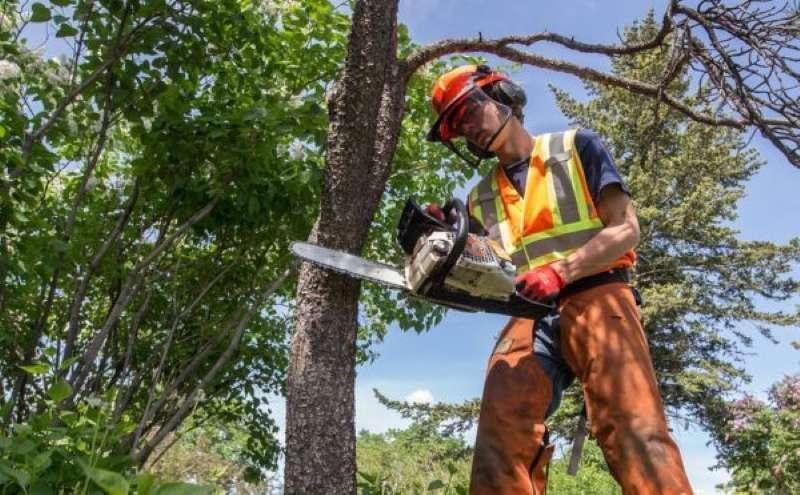Tree removal is the professional cutting down and clearing of a tree that has become hazardous, unwanted, or obstructive. This can range from removing a small ornamental tree in a backyard to taking down a massive oak that's threatening a structure.
When Is It Necessary?
Tree removal is typically a last resort, used when pruning, trimming, or treatment won’t solve the problem. It’s essential when a tree is dead, diseased beyond recovery, or poses a safety threat to people or property.
Reasons for Tree Removal
Safety Concerns
Unstable or dead trees can fall at any moment—especially during storms—and cause injury or extensive damage.
Disease or Decay
Fungal infections, rot, or pests like termites can weaken a tree’s structural integrity. If the tree can’t recover, removal is the safest option.
Property Damage or Interference
Trees can lift sidewalks, damage foundations, or invade plumbing systems. Roots and branches don’t respect boundaries!
Landscaping and Construction Projects
Sometimes, tree removal is necessary for a new pool, home expansion, or complete landscape redesign.
Signs a Tree Needs to Be Removed
Dead or Dying Tree
If there’s no new growth in spring or large portions of the tree are bare, it may be time to say goodbye.
Root Damage
Cracked soil, tilting trunks, or visible root decay are all signs of trouble underground.
Fungus at the Base
Mushrooms or fungi at the base can signal internal rot or disease.
Tree Leaning or Tilting
If the tree has begun to lean more than usual, it could be slowly uprooting and at risk of falling.
Tree Removal Process Step-by-Step
Site Assessment
The process begins with a site inspection to determine the safest and most efficient method of removal.
Equipment Preparation
Professionals set up ropes, harnesses, cranes, chainsaws, and other tools needed for the job.
Branch and Trunk Cutting
Branches are cut and lowered first, then the trunk is removed in sections to minimize risk.
Stump Removal (Optional)
Stump grinding can be done immediately after removal or scheduled later.
Methods of Tree Removal
Felling
Cutting the tree at its base and letting it fall—ideal for open spaces.
Sectional Dismantling
Used in tight areas where space is limited; tree is taken down piece by piece.
Crane-Assisted Removal
Heavy-duty trees or difficult jobs may require a crane to remove sections safely.
Tree Removal Safety Tips
Protective Gear
Hard hats, safety goggles, gloves, and chainsaw protection are essential.
Clear the Area
Keep people, pets, and vehicles well away from the removal zone.
Hire a Professional Arborist
Trained experts understand tree behavior and safety. Don’t risk injury with DIY jobs.

